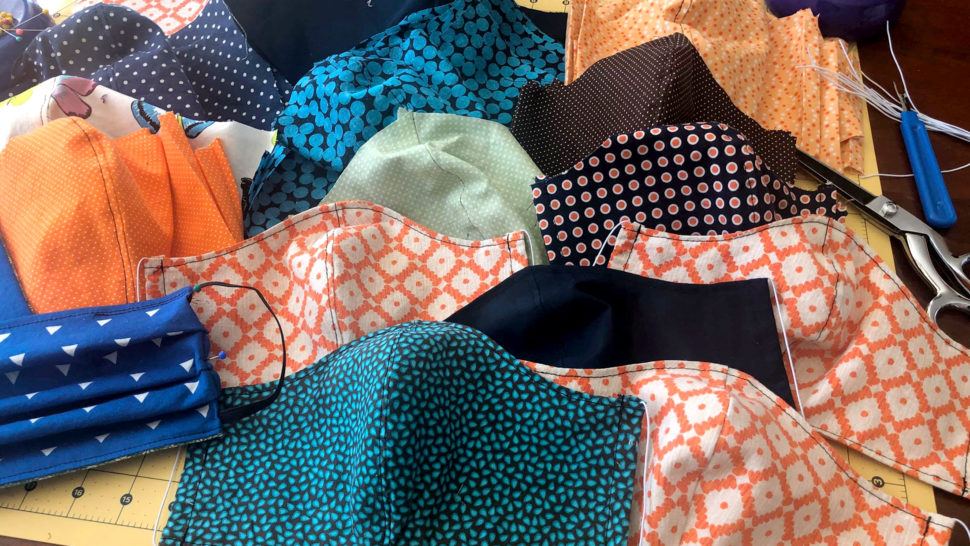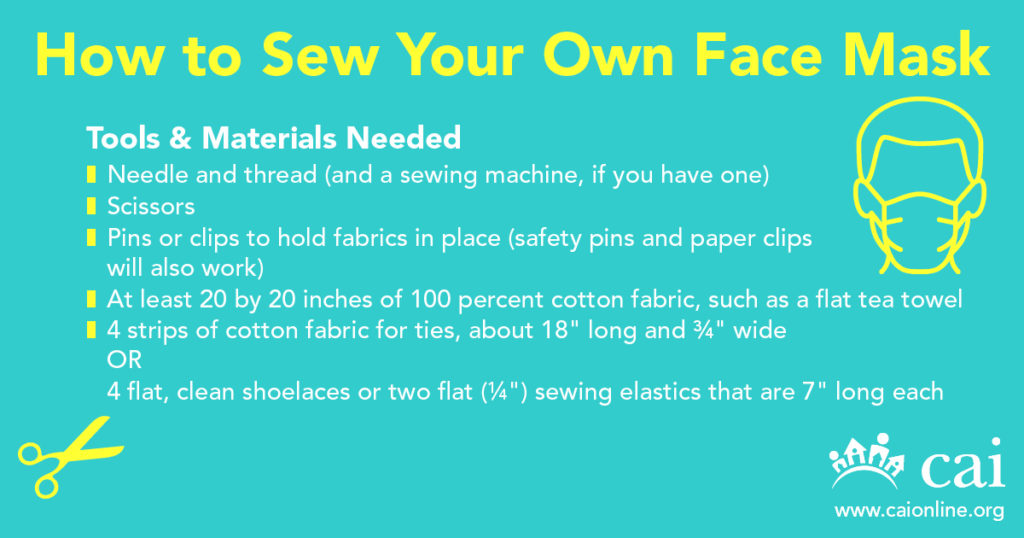Wearing Face Masks to Limit the Spread of COVID-19


The Centers for Disease Control and Prevention is recommending that people wear face coverings made of cloth or fabric when out in public spaces where 6 feet of physical distance is difficult to maintain, such as grocery stores and public transportation.
This voluntary measure is meant “to slow the spread of the virus and help people who may have the virus and do not know it from transmitting it to others,” the agency states. Face coverings also should be worn when caring for someone who is sick or by a sick person sharing a room or vehicle with others.
Cloth face coverings should:
People who should not wear a face covering include children under the age of 2, those who have trouble breathing, and those unable to remove the face mask without assistance.
Some associations have stepped in to address the shortage of face masks. Residents at Ford’s Colony Homeowners Association in Williamsburg, Va., gathered fabric and needles and started to sew, making more than 400 face masks in just a few days to donate to local healthcare workers. The association’s craft club, which includes 65 members, as well as individual residents also pitched in with additional face coverings.

“My wife Cheri and I made over 100,” says Drew Mulhare, CMCA, LSM, PCAM, general manager at Ford’s Colony and president of Realtec Community Services.
Mulhare says the masks were donated to staff at Hospice House and Sentara Hospital, both in Williamsburg, and mailed by residents to relatives who are healthcare workers or first responders. “Medical professionals are using the masks as additional protection in front of their N95 respirators to prolong their usefulness. They also are using the masks in their office when not attending to a potential COVID-19 patient,” Mulhare explains.
CAI has developed guidance, sample forms and documents, and FAQs on the COVID-19 outbreak. Bookmark the page and return regularly for updates and additional resources.
Disclaimer: This information is subject to change. It is published with the understanding that Community Associations Institute is not engaged in rendering legal, accounting, medical, or other professional services. If legal advice or other expert assistance is required, the services of a competent professional should be sought.
HOAresources.com explores questions and comments from community association members living in condominiums, homeowners associations, and housing cooperatives. We then assemble trusted experts to provide practical solutions to your most commonly asked, timely questions. We never use real names, but we always tackle real issues. Have a question or comment about your community association? Submit here for consideration:
Join CAI’s online community for access to the industry’s most in-demand community association resources.
Thousands of your peers are sharing advice.
Amy Repke, Vice President, Communications & Marketing. Amy brings more than 20 years of experience to CAI. Her communications career began in television news where she worked as a producer, writer, and assignment manager for local and network news channels. Amy has been nominated for four Washington Regional Emmy awards for writing and producing. Amy is a graduate of Old Dominion University and received a master's degree in Strategic Public Communications from American University.